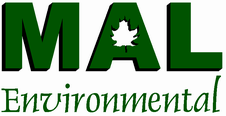Coke
oven emissions are complex mixtures of coal, tar, creosote and polycyclic
aromatic hydrocarbons (PAHs), and metals. They can also contain
benzene, naphthylamine, cadmium, arsenic, beryllium, and chromium.
Coke oven emissions are defined as the benzene-soluble fraction
of total particulate matter present during destructive distillation
or carbonization of coal to produce coke. The primary use of coke
(pure carbon) is in the extraction of metals from their ores, especially
for the manufacture of iron and steel. Coke is also used to synthesize
calcium carbide and to manufacture graphite and electrodes. Exposure
to coke oven emissions typically occurs through inhalation.
Coke oven emissions contain literally several thousand compounds,
several of which are known carcinogens and/or co-carcinogens. Chronic
exposure to coke oven emissions in humans can result in conjunctivitis,
severe dermatitis, and lesions of the respiratory system and digestive
system. Cancer is the major concern from exposure to coke oven emissions. |
Currently,
there are no regulations pertaining to coke oven emissions on construction
projects. Industrial processes involving coke oven emissions are
regulated under the Ontario Occupational Health & Safety Act,
R.S.O. 1990, Regulation 840 as amended by O.Reg. 106/04, Designated
Substance – Coke Oven Emissions. The transport of the waste
to the disposal site is controlled by the federal Transportation
of Dangerous Goods Act, 1992. |



